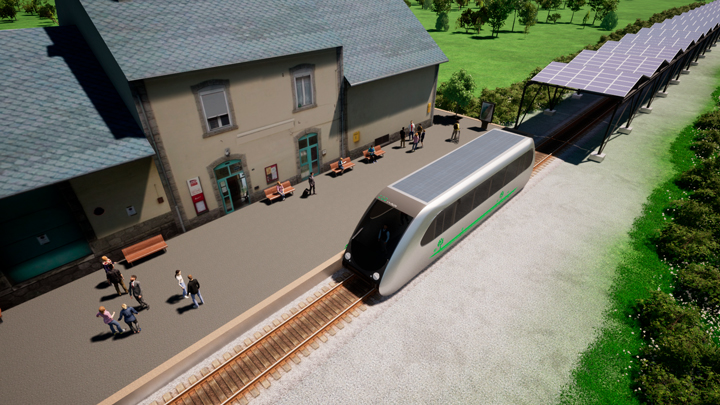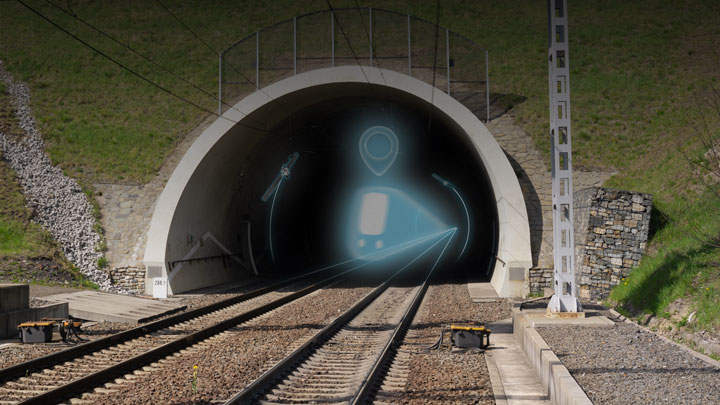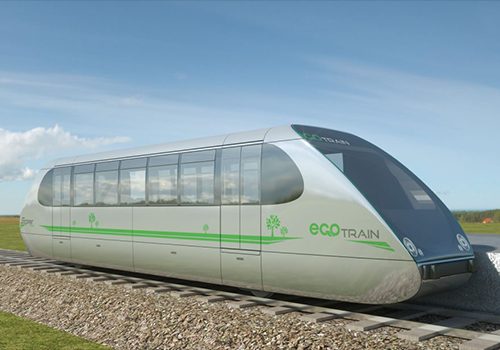Introducing the Eco Train Project
The Eco Train project represents a bold step forward in sustainable transportation, focusing on revitalizing underutilized train tracks in rural areas. Financed by ADEME, this innovative initiative aims to develop autonomous electric train shuttles, each with the capacity to carry 30-40 passengers. The project’s vision is to harness existing infrastructure to offer a greener, more efficient mode of transportation for rural communities, thereby reducing the environmental footprint and bridging the rural-urban mobility gap.

Artist view of the Eco Train Shuttle entering a station, delivering a sustainable transportation service for rural communities
Syntony's SoftSpot Technology: A Leap in Geolocation
Central to the Eco Train’s navigation and operational success is Syntony’s SoftSpot GNSS receiver technology. This advanced system stands out for its resilience to the multipath effect, a common challenge in GNSS-based navigation where signals reflect off surfaces, causing inaccuracies. SoftSpot’s robust design significantly mitigates this issue, ensuring more reliable and precise geolocation.
Furthermore, SoftSpot’s true prowess is displayed in its ability to integrate within a larger location system, incorporating additional sensors like Inertial Measurement Units (IMU) and odometry. This synergy allows for a comprehensive positioning solution, essential for the autonomous navigation of the Eco Train. By combining GNSS data with sensory inputs from the train’s movement and wheel rotations, SoftSpot delivers a level of positioning accuracy that is crucial for safely operating autonomous trains on rural tracks.

GNSS coverage extension in underground tunnels allows the continuity of geolocation services for autonomous train navigation
SubWAVE Technology: Extending GNSS Coverage Underground
Future steps for the development of autonomous train technology may be Syntony’s SubWAVE technology deployment. Designed to extend GNSS coverage underground, this technology is particularly relevant for assets like the Eco Train, as many track networks include kilometers of underground tunnels, and hereby challenging environment for GNSS systems.
SubWAVE stands out by extending not just GPS but also Galileo coverage across multiple bands, offering multi-constellation positioning. This advancement is pivotal for autonomous trains like the Eco Train, ensuring continuous and accurate location tracking, even in subterranean settings. With SubWAVE, autonomous trains would be able to maintain their navigation integrity throughout their journey, including the underground sections, thereby enhancing the safety, reliability, and reach of these autonomous shuttles.
The Eco Train project, powered by Syntony’s innovative SoftSpot and SubWAVE technologies, marks a significant advancement in autonomous rail transportation. This initiative not only promises to bring efficient and environmentally friendly travel to rural areas but also demonstrates the potential for cutting-edge technology to transform public transportation systems. As the project progresses, the integration of these technologies will be crucial in overcoming the traditional barriers of train navigation, paving the way for a new era of autonomous and sustainable rural mobility.
